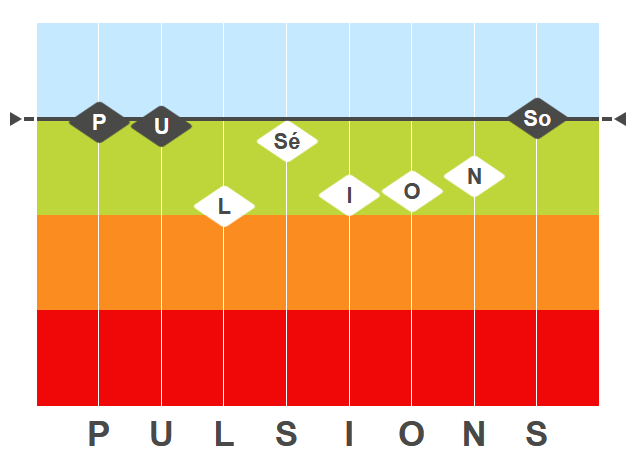
How to manage stress with PULSIONS
There are good and bad stresses… The second is more insidious and can cause an individual to lose his or her nerve and slowly but surely slide towards burnout. By enabling them to better understand their skills in a given context, the PULSIONS test offers them the keys to better anticipate these turbulent areas
Considered to be the “disease of the century”, stress is “a state caused by disturbances – physical, psychological or emotional – on the body”. But, as with cholesterol, there are good and bad stresses. The former is defined by a slight pressure and an increased positive motivation that will allow an individual to surpass himself in order to achieve a set objective. The pressure will fall once the mission is accomplished…
Bad stress is more insidious and latent. It lasts for a long time and eats away at its host. It is characterised by extreme tiredness, irritability, sleep or eating disorders, difficulty concentrating, etc. An individual has the feeling of losing control of his life and of drowning in negative energy. There is a risk that this could lead to burnout.
TECHNIQUES TO REGAIN BALANCE
There are of course various techniques for trying to combat this scourge. The Internet is full of advice and solutions for finding balance and serenity and making stress a driving force for performance, not a hindrance. Breathing and relaxation techniques, sophrology, meditation… These weapons are effective, but they are only temporary. Stress can be caused by inappropriate behaviour and poor time management. A person may experience a stressful and frustrating situation because he or she does not dare to express his or her desires or limits, or because he or she simply cannot prioritise tasks, say no and delegate. It is therefore essential to work on her assertiveness and, above all, to become more aware of her skills, in order to prevent these stressful outbursts that cause her to lose her temper.
KNOW YOUR AREAS OF TENSION
How to proceed? The PULSIONS test is an ideal tool for understanding one’s behaviour and reactions to situations. In our profiles, we all have areas in which we naturally do not have the resources to react. These situations, in which we know we should do something but in fact do not, generate strong internal tensions. Being aware of these resourceless areas allows us to consciously opt for a more adaptive response. How can we do this? By looking for the closest available behaviour in our profile, but above all by helping ourselves with our fundamentals, as this remains our greatest strength to help us take action!
Example with graph:
Emmanuel Manager

Emmanuel is a very committed manager. His PULSIONS profile shows that he MUST be in constant contact with his clients and collaborators, that he MUST take control and steer ALL the issues that fall under his responsibility, that he MUST deliver immediately and respond to all the requests made to him. All his impulses push him to collaborate and above all to avoid being confronted with problematic situations, which would overwhelm him, as he has no resources available in the orange zone of his profile to act in the event of problems. His response is to invest a great deal of effort in keeping control of everything, at the risk of spreading himself too thin and burning up too much energy.
Finding himself in a context where he finds that he is losing control of the situation, where he is overwhelmed by the volume to be dealt with, where collaboration with people is strained or even where people are opposed to him, are examples of situations in which Emmanuel knows intellectually that he should act, react, but cannot. Being overwhelmed by thoughts of what he should and ought to do and not being able to do it is an intense stress factor that affects his health, starting with his quality of sleep. By relying on his fundamental impulses, he has learned to surround himself with people to whom he can really delegate responsibilities and activities so that he doesn’t feel obliged to intervene in everything and take it all on his shoulders.
With their PULSIONS profile, people can discover their strengths and weaknesses in a given context. This information gives them the opportunity to plan strategies and anticipate periods of stress – but also to communicate better with those around them. Above all, it provides useful keys for working on one’s behaviour – and on one’s points of vigilance – so as to no longer be overwhelmed by the turbulence that regularly appears on one’s path.
Last news
PULSIONS vs. personality tests: what complementarities?
In addition to the usual CVs and cover letters, recruiters and HR managers […]


